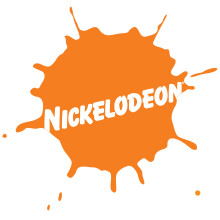Nickelodeon Arabia
| Nickelodeon | |
|---|---|
 | |
| Nickelodeon | |
| Launched |
July 16, 1996 July 23, 2008 (relaunch) |
| Closed | September 8th, 2011 |
| Owned by | MTV Networks (Viacom) |
| Sister channel(s) | MTV Middle East |
Availability | |
| Satellite | |
| Nilesat 7°W | 10775 H |
| Arabsat 26°E | 12169 V |
Nickelodeon Arabia was a satellite, free-to-air channel for Arab children, teens and adults. It was the official Arab arm of Nickelodeon and the last remaining arm to retain the 'splat' logo that was used from 2003 - 2009 in the United States and 2002 - 2010 in Europe.
It was the second channel in the joint venture between MTV Networks International and Arabian Television Network, part of Arab Media Group, the largest media group in the United Arab Emirates, after the successful launch for MTV Arabia (now known as MTV Middle East).[1]
As of 2011, it was the only Nickelodeon channel worldwide that had not changed its logo from the orange splat to the orange text.[citation needed] Since late 2010, the channel had been suffering a frozen broadcast, broadcasting its usual programmes repetitively without any evidence of upcoming updates.[citation needed] Its official website went down, and there were no clear indications or citations for why the channel was heavily neglected.[citation needed] Regardless, the channel remained live for many months into 2011.[citation needed]
On 8 September 2011, at one minute past midnight in U.A.E. time, and without a mainstream warning, the channel went on an indefinite hiatus without any explanation.[citation needed] The broadcast signal initially displayed nothing but a static message indicating Nickelodeon Arabia's viewers to continue watching Nickelodeon programmes via the Nickelodeon block on MBC 3.[citation needed] The signal then reverted to a casual test card a few days later , and the channel was de-listed by various satellite television providers.[citation needed] A few months later, the signal itself disappeared completely.[citation needed]
Programming
The animated shows featured on Nickelodeon Arabia are all dubbed into Arabic, and there had been no means of switching between audio languages.[citation needed] The live-action TeenNick shows aired in English with Arabic subtitles.[citation needed] Original social shows produced by Nickelodeon Arabia's own studio, such as Shoof Kids and Jamaatna, were also in Arabic.[citation needed]
Most of the network shows were outdated, older series at the time of their debut, although they are considered fairly never-before-seen by most of the Arab audience at one time, in either their English or Arabic formats.[citation needed] There were even several series yet to debut on Nickelodeon Arabia, with exception of The Fairly OddParents, which apparently already settled on the Middle Eastern Disney Channel. Although Fairly OddParent characters did appear in activity segments from Nickelodeon Magazine cutouts.[citation needed]
Like most Arab channels, Nickelodeon did feature censorship.[citation needed] This was similar to the censorship on MTV Arabia.[citation needed]
Shows that originally aired
Nicktoons
- The Adventures of Jimmy Neutron: Boy Genius[1]
- As Told by Ginger[2]
- Avatar: The Legend of Aang[2]
- CatDog[2]
- Catscratch[2]
- Chalkzone[2]
- Danny Phantom[2]
- Hey Arnold![2]
- Kappa Mikey[2]
- My Life as a Teenage Robot[2]
- Rugrats[1]
- SpongeBob SquarePants[1]
- The Wild Thornberrys[2]
- The X's[2]
- Nickelodeon Kids' Choice Awards[1]
TeenNick
Nick Jr.
- Dora the Explorer[1]
- The Wonder Pets[2]
- Oobi
Filler shows
The following short-slot shows appeared as fillers in-between the prime shows:
- Domo
- Purple and Brown
- Ooohhh-Asis
- Primo
Original Programming
Catch Match
Catch Match (كاتش ماتش) was an original programme for Nickelodeon Arabia that was renewed every holy month of Ramadan. It was a kids' game show that had two opposing teams compete in a variety of physical challenges to gain the most points. This show was hosted by the announcer Taj Aser, and was filmed on location in Jeddah.[3][2]
Shoof Kids
Shoof Kids was an original show that featured home-made videos sent in by viewers.[1]
References
- ↑ 1.0 1.1 1.2 1.3 1.4 1.5 1.6 1.7 1.8 "Nickelodeon Arabia set to go on air on Wednesday". Emirates 27/7. 20 July 2008. Retrieved 19 July 2013.
- ↑ 2.0 2.1 2.2 2.3 2.4 2.5 2.6 2.7 2.8 2.9 2.10 2.11 2.12 2.13 "Nick Shows". NickArabia.net. Viacom International Inc. Archived from the original on 5 September 2010. Retrieved 5 September 2010.
- ↑ http://www.okaz.com.sa/new/issues/20110730/Con20110730436998.htm
External links
- Official English website (Archived from the original 9 September 2010)
| |||||||||||||||||||
| |||||||||||||||||||||||||||||||
| |||||||||||